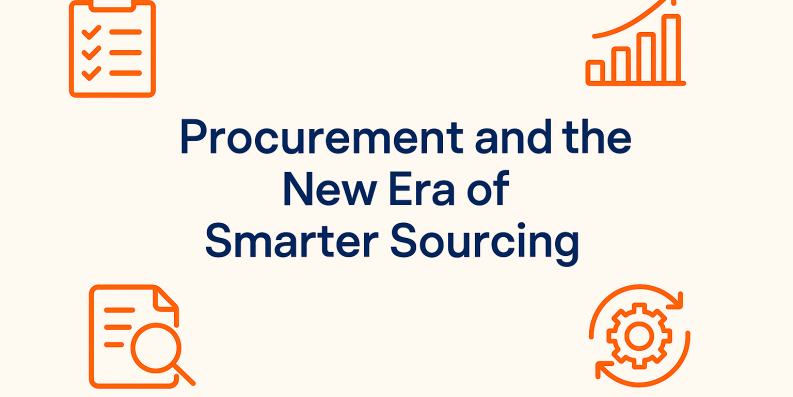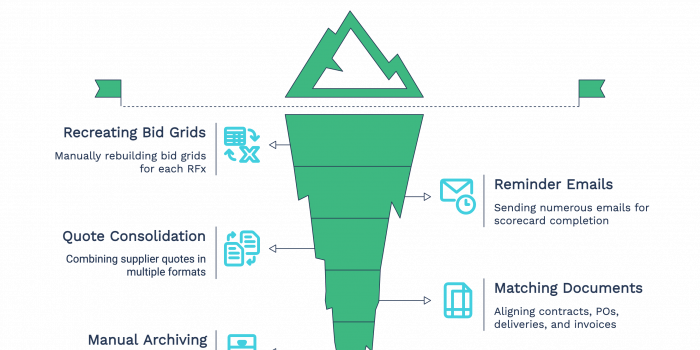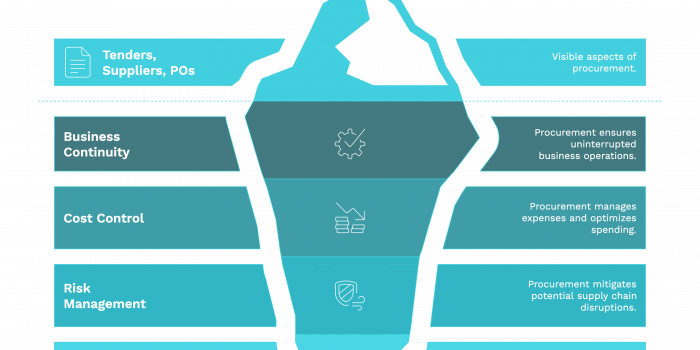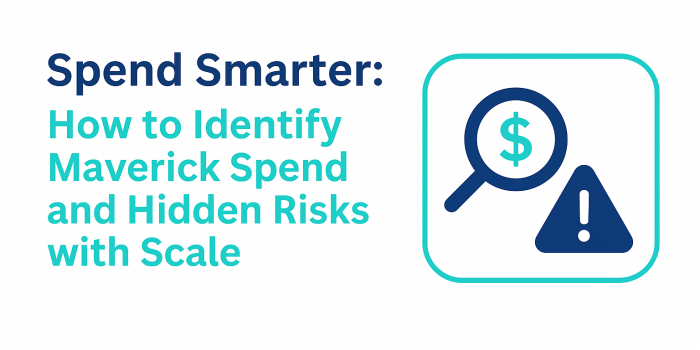Procurement and the New Era of Smarter Sourcing
Why Procurement Teams Are Evolving from Paper Pushers to Strategic Powerhouses Procurement used to be seen as an operational function – raising orders, chasing suppliers, and managing contracts. But the role has changed. Fast. Today, procurement is about building supplier ecosystems, controlling spend, maintaining compliance, and ensuring resilience in a

Why Procurement Teams Are Evolving from Paper Pushers to Strategic Powerhouses
Procurement used to be seen as an operational function – raising orders, chasing suppliers, and managing contracts. But the role has changed. Fast.
Today, procurement is about building supplier ecosystems, controlling spend, maintaining compliance, and ensuring resilience in a volatile world. Sourcing isn’t just about buying at the lowest price – it’s about buying with foresight, transparency, and speed.
Let’s explore how smarter sourcing is redefining the role of procurement teams — and what modern professionals are doing differently.
1. Sourcing, Done Strategically
Traditional sourcing cycles are time-consuming and rigid. They involve multiple departments, scattered documents, unclear evaluation criteria, and late-stage surprises.
Modern procurement teams streamline this by:
- Using structured templates for RFQs, RFPs, and EOIs
- Setting clear evaluation criteria up front
- Standardising how clarifications and feedback are handled
- Running competitive sourcing with faster turnaround
Result: More bids, higher quality responses, and greater transparency.
2. From Data Dumps to Spend Visibility
It’s no longer enough to know how much was spent – procurement teams need to know:
- Where it was spent
- With whom
- At what terms
- And how that compares to the budget or past periods
Smarter sourcing starts with smarter reporting. Teams now build dashboards that track:
- Supplier performance
- Price trends
- Category-level spend
- Expiring contracts
- Maverick spend and off-policy purchases
Result: Informed decisions and stronger controls.
3. Proactive Risk and Compliance Management
Procurement is increasingly tied to governance – from due diligence to ESG compliance. Smart sourcing involves more than price: it considers reputation, sustainability, legal exposure, and delivery risk.
What modern teams are doing:
- Standardising prequalification and onboarding workflows
- Centralising supplier documentation
- Tracking certifications and expiry dates
- Flagging high-risk vendors or categories for review
- Embedding compliance checks in sourcing templates
Result: Lower exposure, better audit trails, and stronger partner accountability.
4. Smarter Documentation and Internal Alignment
Procurement often hits roadblocks not because of supplier delays, but internal misalignment – between operations, finance, legal, and leadership.
Procurement leaders are improving outcomes by:
- Creating clear sourcing timelines and milestones
- Generating decision summaries and evaluation memos
- Using shared formats for stakeholder approvals
- Ensuring all documentation is version-controlled and accessible
- Logging evaluations and decisions in a central repository
Result: Fewer email chains, fewer delays, and faster award decisions.
5. From Reactive to Repeatable
Instead of reinventing the wheel every time, high-performing teams turn sourcing into a series of modular, repeatable processes:
- Templates for each sourcing type (goods, services, works)
- Category playbooks
- Evaluation guides
- Supplier feedback templates
- Approval workflows
- This turns sourcing from firefighting to flow.
Result: Faster execution, consistent quality, and easier onboarding for new team members.
What This Looks Like in Practice
Let’s say your team needs to source security services for multiple branches:
- You start with your pre-approved RFQ template
- You reference last year’s benchmarks and supplier scores
- You launch the RFQ and receive bids through a centralised system
- Evaluation is scored using a documented matrix
- You generate an award memo and feedback letters in under a day
That’s smart sourcing in action — and it’s already happening in leading teams across sectors.
The Modern Procurement Team
Procurement has shifted from being task-driven to insight-driven. The teams making the biggest impact today are those who:
- Run consistent, transparent sourcing cycles
- Use data to guide every decision
- Align with finance, legal, and operations from day one
- Build resilient supplier ecosystems, not just vendor lists
- Turn documentation into insight, not just storage
Frontline Function
Sourcing is no longer a behind-the-scenes admin task – it’s a frontline business function. And when done right, it protects your margins, ensures continuity, and strengthens your organisation’s reputation.
The future belongs to procurement teams that operate strategically – with tools, processes, and discipline that reflect the full importance of their role.








